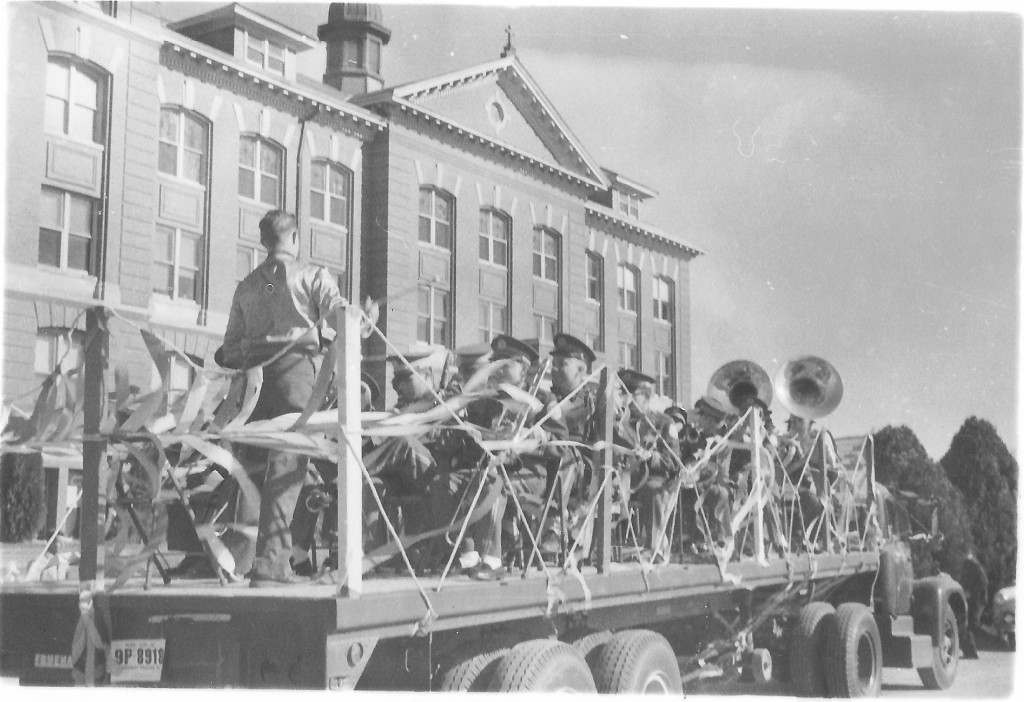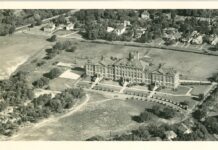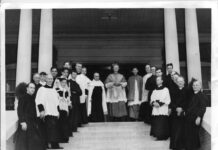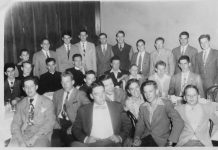This summary is compiled from Mr. Allen’s talk in 2006 with freshmen in Ms. Celeste DesOrmeaux’s English class and from previous discussions with Sheryl Row, Jesuit Archivist. The talk in 2006 was recorded.
In early 1954 a group of city leaders met in the Adolphus Hotel to discuss integration in Dallas schools. Attending were J. Erik Jonsson, CEO of Texas Instruments; W. A. Criswell, pastor of First Baptist Church; Stanley Marcus, president and founder of Neiman Marcus. They believed school segregation would be outlawed in Brown vs Board of Education. They didn’t want the city to experience riots when children were forced to integrate, so they discussed ways to avoid this. They believed if they could show that school integration could work in Dallas, they could avoid a disaster. Jesuit looked like a good place to start. It was physically set apart from the public schools by geography and religion. If integration failed there, it would be Jesuit’s problem not a city problem.
The men talked to Fr. Shields and Fr. Kamara about the idea. The priests initially refused because they were afraid they would lose students and thus tuition. Jonsson suggested the group would cover any losses. For every student lost, they would cover double the tuition. Three students pulled out of Jesuit in protest, but two eventually returned.
The adults in the school had the same prejudices as the general population. Many made it known to me that they weren’t happy I was there, but others accepted me. The students and I bonded into a friendship that has continued all these years.
I grew up on 2230 Hatcher St. downtown from Lincoln High School. I took the bus to McKinney Ave. to Oak Lawn to attend Jesuit. During the day I studied hard, but I got involved in numerous activities: football, baseball, elocution, track. At night I returned to my neighborhood, to a totally different culture. I got some heat from some of the neighborhood for attending Jesuit. They’d ask me: “You too good for us? You going to talk white, now?”
Frankly, I hated Jesuit. I didn’t want to attend, and my family’s decision caused an alienation between my father and me that lasted for many years. Two days after the news reported that Jesuit would be integrated my mom and dad and I were watching TV when we heard a loud boom. A stick of dynamite had hit the house, bounced off, and landed on our neighbor’s porch, knocking it off its foundation.
I didn’t know anyone at Jesuit, and it wasn’t near my neighborhood. I couldn’t attend dances since mixed race dancing was illegal. Some schools wouldn’t play Jesuit if I even suited-up with the team. Since Jesuit didn’t want to forfeit a game, I didn’t participate. Usually the priests would ask me to make the decision, which was, of course, a huge responsibility to put on a young boy.
On Friday before a football game I’d hear an announcement calling me to the principal’s office. I would be given the choice to sit out the game or have the team forfeit. After these meetings I would go downstairs to the locker room and cry. Then, I would come back up.
I couldn’t play Galveston Irwin in 58-59 for the state championship. Cathedral erected chicken wire to keep the schools separated.
Sometimes a school’s junior varsity would be willing to play with me when the varsity wouldn’t. Then I would play with the junior varsity. Often during the games I played the other school’s crowd would hurl obscenities, throw Coke on me, and spit at me. Bob Cahill appointed himself as my protector, and he’d mete out justice as he saw fit. Most of the guys were my friends, but some faculty and parents would make snide remarks.
I did enjoy some things about Jesuit. I liked my athletic prowess and my public speaking talent and the affirmation they gave me with my peers. I also learned survival techniques that helped me succeed, form partnerships, solve problems, etc.





